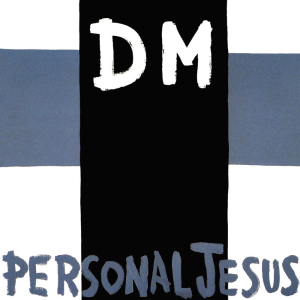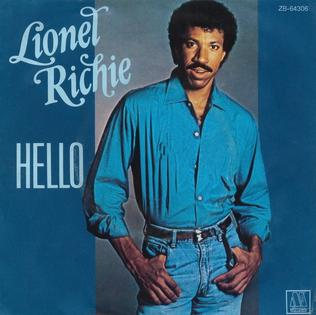 There are songs that make you want to dance, songs that make you cry, and then there’s People Who Died by the Jim Carroll Band—a track that somehow manages to do both simultaneously while also making you question your life choices, your friends’ life choices, and the very concept of mortality. Released in 1980 as part of the album Catholic Boy, this song is a fast, furious, and hilariously dark tour of human tragedy, delivered with the raw energy of punk rock and the precision of someone who has spent too long observing the absurdity of life. Listening to it is like riding a roller coaster fueled by espresso, cigarette smoke, and bitter, bitter irony.
There are songs that make you want to dance, songs that make you cry, and then there’s People Who Died by the Jim Carroll Band—a track that somehow manages to do both simultaneously while also making you question your life choices, your friends’ life choices, and the very concept of mortality. Released in 1980 as part of the album Catholic Boy, this song is a fast, furious, and hilariously dark tour of human tragedy, delivered with the raw energy of punk rock and the precision of someone who has spent too long observing the absurdity of life. Listening to it is like riding a roller coaster fueled by espresso, cigarette smoke, and bitter, bitter irony.
From the very first guitar strum and snare hit, it’s clear that People Who Died is not here to comfort you. The song opens with a blunt, almost jarring beat: driving, unrelenting, and impossibly urgent. Carroll’s vocals hit immediately, matter-of-fact and almost conversational, listing names of friends, acquaintances, and random characters who met untimely ends. There is no preamble, no soft focus—it’s as if he grabbed you by the shoulders, pointed at your face, and shouted, “This is life, it’s terrible, and here’s the proof!” The musical backdrop—punk guitars, pounding drums, and a chaotic yet tight rhythm section—perfectly underscores the absurdity and inevitability of human mortality.
The genius of the song lies in its delivery. Jim Carroll doesn’t sing People Who Died in a mournful or sentimental way. He narrates it, with a rhythm and cadence that feels almost like a conversation at a bar that’s gone horribly off-script. There’s a wry, morbid humor embedded in every line, a knowing acknowledgment of the ridiculousness of life and death. The fact that he can recite a litany of tragic ends—stabbed, drowned, ran over, died from a disease—and make it both horrifying and darkly funny is a testament to Carroll’s unique perspective as a poet, performer, and observer of chaos.
Musically, the song is deceptively simple. It’s raw, stripped-down punk, but every element is purposeful. The guitar riffs are repetitive and driving, reflecting the relentless nature of life’s misfortunes. The drums pound with an almost mechanical insistence, echoing the inevitability of fate. The bassline moves with urgency, tying the chaos together, while Carroll’s vocal delivery rides atop this foundation like a storyteller narrating a horror-comedy at breakneck speed. There’s no room for ornamentation or sentimentality; every note serves the narrative, every beat punctuates the absurdity.
What makes People Who Died particularly striking is the sheer specificity of the lyrics. Carroll doesn’t offer vague references or generic imagery; he names names, lists locations, and provides grisly details. You hear about people who were shot, run over, or overdosed. You hear about friends from his youth in New York City, some of whom met tragic, untimely ends. By doing this, Carroll transforms what could be a bleak or preachy song into a vivid, almost cinematic experience. You can picture each scenario, each person, and feel the chaotic energy of their lives and deaths. Yet, somehow, he balances this with humor: the list reads like a punk version of a yearbook gone horribly wrong, a morbid celebration of survival, tragedy, and human foolishness.
The pacing of the song is another reason it resonates so strongly. Clocking in at under three minutes, it’s rapid-fire from start to finish. There’s no breathing room, no reflection, no time to process grief—only rapid, relentless storytelling delivered with punk precision. This brevity amplifies the humor and the shock: you’re laughing, horrified, and tapping your foot all at once. The song’s structure mimics the unpredictability of life itself, with twists, abrupt stops, and sudden accelerations that keep the listener on edge.
Vocally, Jim Carroll is perfectly suited for the material. His delivery is casual, almost conversational, but with an underlying intensity that drives the narrative forward. He enunciates the grim details with clarity, but there’s a playful, almost mischievous tone that keeps the listener from descending into despair. It’s the voice of someone who’s seen the worst and decided that if you can’t laugh at it, you’ll just scream. There’s a rawness to his performance that reflects the lived-in reality behind the words: Carroll was a poet, a punk, a chronicler of a world filled with chaos, and his voice carries the weight of experience without ever becoming self-important.
One of the most interesting aspects of People Who Died is how it blurs the line between personal narrative and universal experience. While Carroll draws heavily from his own life and social circle, the song resonates with anyone who has witnessed absurdity, loss, or the randomness of fate. The deaths of Carroll’s friends become stand-ins for the unpredictability of life itself. And yet, because the song is so immediate, fast-paced, and filled with dark humor, it avoids becoming morose or preachy. It’s existential reflection delivered in a mosh pit, and somehow that works brilliantly.
The instrumentation, while deceptively simple, plays a crucial role in reinforcing the song’s themes. The guitars are crunchy, urgent, and slightly abrasive, mirroring the rough edges of the world Carroll describes. The drums are relentless, almost punishing, driving the narrative with mechanical inevitability. The bassline anchors the chaos, providing a rhythmic counterpoint to the frenetic vocals. Even without elaborate solos or ornamentation, the musical arrangement is masterful: it provides the perfect vehicle for Carroll’s storytelling while reinforcing the song’s relentless energy.
Lyrically, the song is a masterclass in juxtaposition. Carroll combines the horror of untimely death with absurdist humor and punk irreverence. He recounts tragedies with blunt, matter-of-fact language, often punctuated by darkly funny asides or ironic commentary. This combination of horror, humor, and urgency makes the song a unique listening experience: you’re shocked, entertained, and impressed by Carroll’s ability to navigate this tricky balance with ease. It’s a song that could have easily become exploitative or mean-spirited in less capable hands, but Carroll’s wit, charisma, and musical intelligence keep it grounded and compelling.
The song also stands out for its cultural context. Emerging from the late-1970s New York punk scene, People Who Died captures the gritty, chaotic energy of the city and its subcultures. It reflects the violence, the unpredictability, and the intensity of urban life at the time, filtered through Carroll’s unique perspective as a poet and musician. There’s a documentary quality to the lyrics: you’re not just hearing about death in the abstract, you’re hearing about specific people, specific moments, specific chaos. Yet it’s delivered with humor and style, making the song both entertaining and unsettling.
Perhaps the most enduring appeal of People Who Died is its emotional honesty. Carroll doesn’t sugarcoat anything: the lives and deaths of his friends are laid bare, and the absurdity of their fates is presented without judgment or sentimentality. There’s a brutal honesty here that’s rare in popular music: the song doesn’t try to inspire, moralize, or console. Instead, it simply presents life as it is—messy, absurd, tragic, and occasionally hilarious—and invites the listener to confront it head-on. The combination of urgency, specificity, and dark humor ensures that the song remains unforgettable long after the first listen.
Interestingly, despite its grim subject matter, People Who Died is incredibly fun to listen to. The beat is infectious, the melody hooks into your brain, and Carroll’s vocal delivery makes the chaos feel alive and kinetic. There’s a sense of celebration in the midst of tragedy, a recognition that life is fleeting and absurd, and that music—especially punk music—is one of the best ways to process that reality. It’s the musical equivalent of laughing through tears, and it’s a testament to Carroll’s skill as both a musician and a storyteller.
The track also benefits from its minimalism. There are no unnecessary flourishes, no extended solos, no overproduction—just guitar, bass, drums, and Carroll’s vocals. This stripped-down approach allows the lyrics to shine, emphasizing the absurdity and specificity of each anecdote. Every beat and every note serves the story, reinforcing the song’s tension, humor, and emotional impact. It’s a lesson in how simplicity can amplify both musical and narrative power.
In conclusion, People Who Died is one of the most remarkable tracks of the punk era. It combines dark humor, raw storytelling, musical precision, and relentless energy into a song that is as shocking as it is addictive. Jim Carroll’s ability to blend absurdity and tragedy, to turn personal narrative into universal observation, and to craft a musical backdrop that complements his unique vocal style is nothing short of genius. The song captures the chaos of life, the inevitability of death, and the absurdity of human existence, all in under three minutes.
Listening to People Who Died is an experience that is equal parts exhilarating, unsettling, and hilarious. It’s a song that invites reflection while simultaneously refusing to let you sit still. Carroll’s wit, musicality, and fearless approach to storytelling make it a track that resonates decades after its release. Whether you’re a punk enthusiast, a student of dark humor, or someone who simply appreciates brilliant songwriting, People Who Died delivers a punch that is unforgettable, impossible to ignore, and uniquely Jim Carroll.
Ultimately, the track is a celebration of chaos, tragedy, and human absurdity. It’s a reminder that life is unpredictable, often ridiculous, and sometimes horrifying—but also that music can help us process all of it, one frenetic guitar chord at a time. People Who Died is more than a song; it’s a punk anthem, a dark comedy, and a testament to the power of storytelling through music. In its manic energy, its unflinching honesty, and its infectious rhythm, it captures something essential about life itself: messy, fleeting, and absolutely unforgettable.


